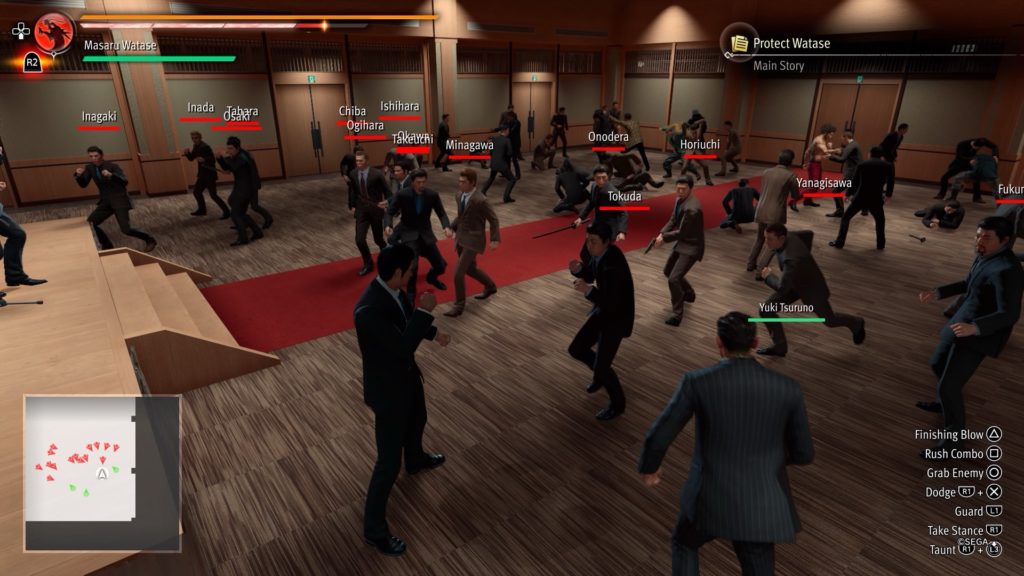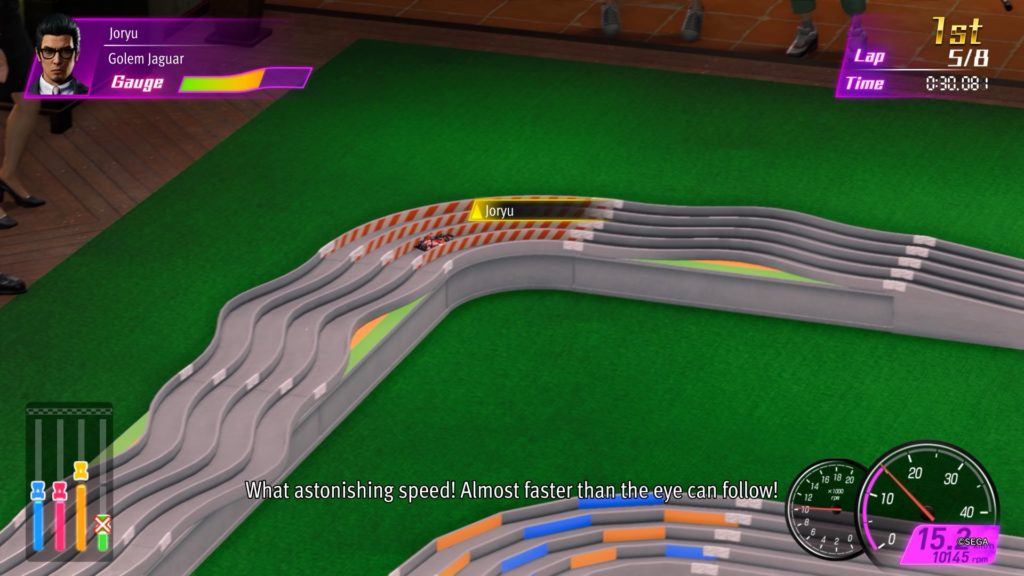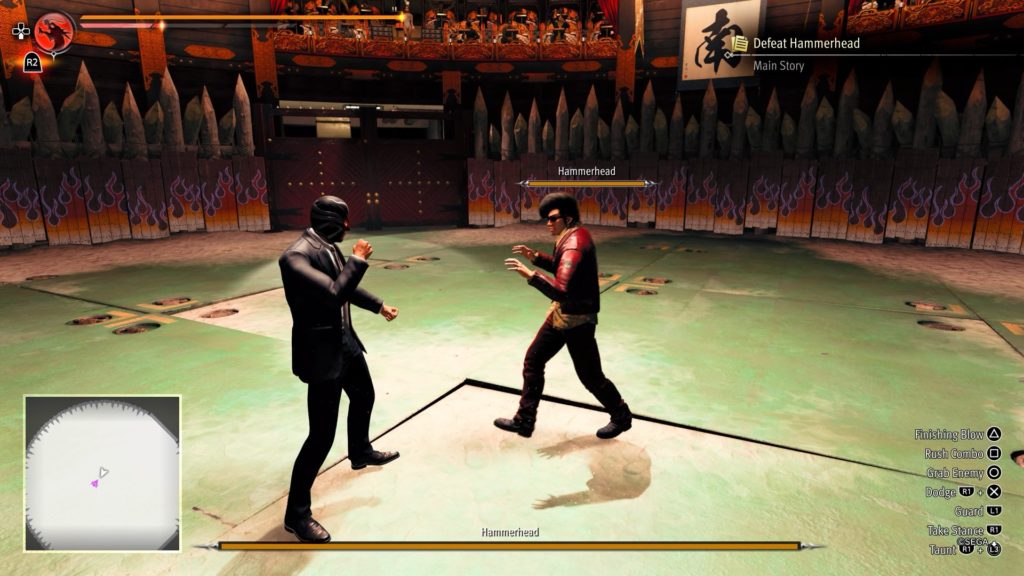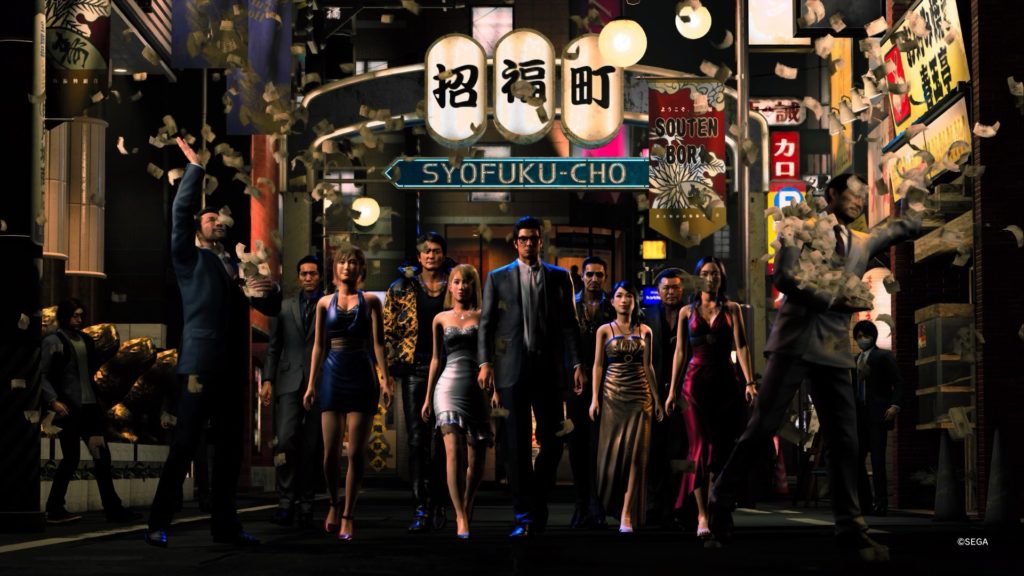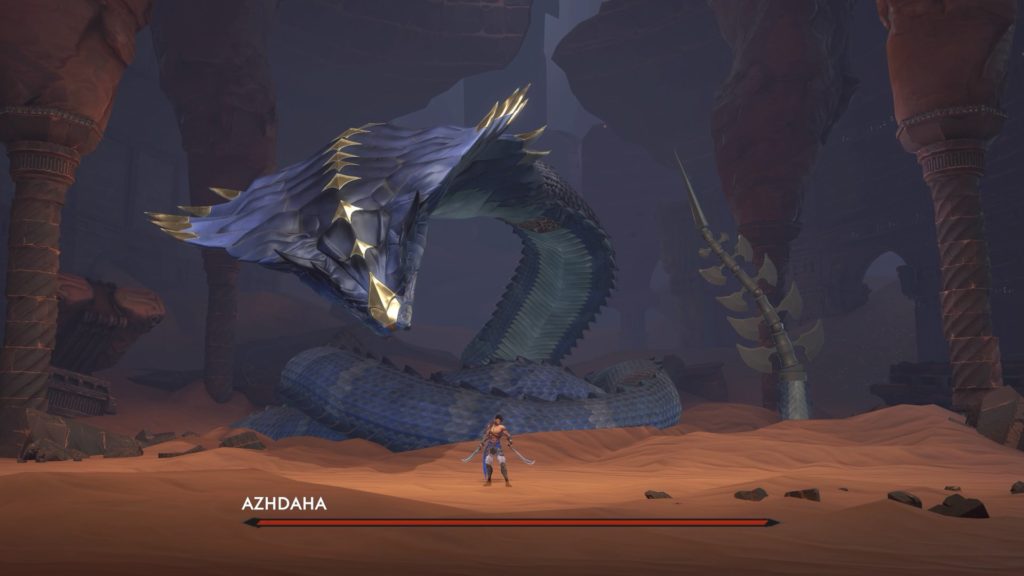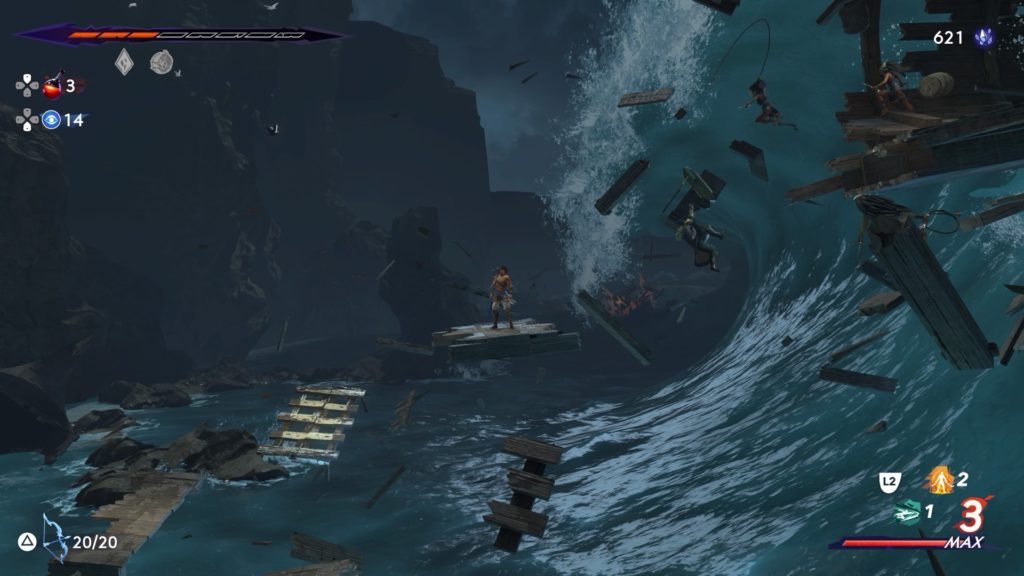- Genre: Action RPG
- Platform: PS5
This game doesn’t have the benefit of being the first in line. It comes on the heels of the astoundingly good FFVII: Remake and continues the ongoing story. However, that wasn’t really a problem for most of the game. It continued to really push the things I liked while adding a larger open world adding a huge, varied, and beautiful open world experience. However, finishing it left me a bit at a loss – the game was definitely extremely good and had I not played the final boss I would be higher on the game, but something about the way the game wrapped up left me at a place of wanting something different.
Note: This ramblings is mostly going to be spoilers, so I’m hiding it behind spoiler tags. Obviously, read at your own risk. My ramblings for the original game absolutely covers a lot of the good here, particularly with combat, so I’m not going to retreat that stuff here.
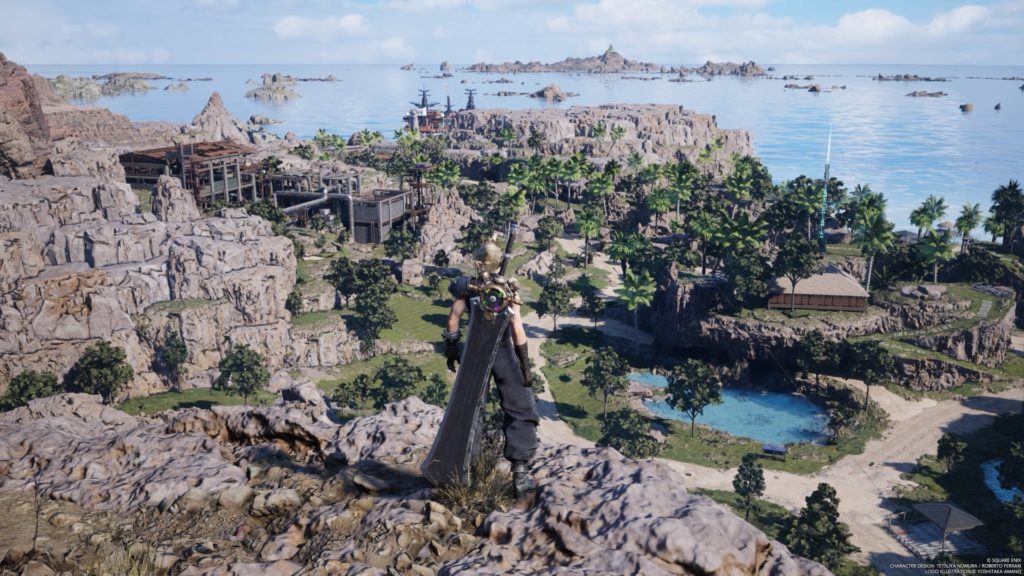
My disappointment was tied to both the final boss from a mechanical standpoint and the way the story wrapped up, but for now we’ll start with the boss fight.
The final fight is (unsurprisingly) against JENOVA and Sephiroth. Where Remake had a fun spectacle fight against Sephiroth and the Whisphers, this game had a slog. The final fight in this game is at least 8, or maybe 10 phases (honestly, I lost count) full of all the worst JRPG tendencies. The fight is too long, it has too many unblockable RNG attacks, it has too many party wipe elements, it’s not hard until you get immediately wiped, it changes your party without control too much. It was just not a fun fight. Spectacle, yes. Fun, no.
The party changing was really my biggest gripe with the fight, because it made a lot of the phases not particularly fun. After playing a game for 60+ hours, I kind of had some built-in likes and dislikes to my party. Aerith was always the right one for me to have in the background handling heals. Cloud was my main damage person due to his ranged/melee flexibility, but I was always comfortable swapping him with Red. Barrett and Tifa were pretty swappable for me in terms of decent damage but great stun build-up. I was never particularly effective with Yuffie, but I could make use of her as an NPC in the party due to her useful elemental switching. Cait Sith was always a black hole for me because of his ineffectiveness without the Moogle being present and the requirement to charge the ATB meter to bring it out. I’d say I could generally switch between 3-4 of them and be immediately comfortable as long as I had some of them around.
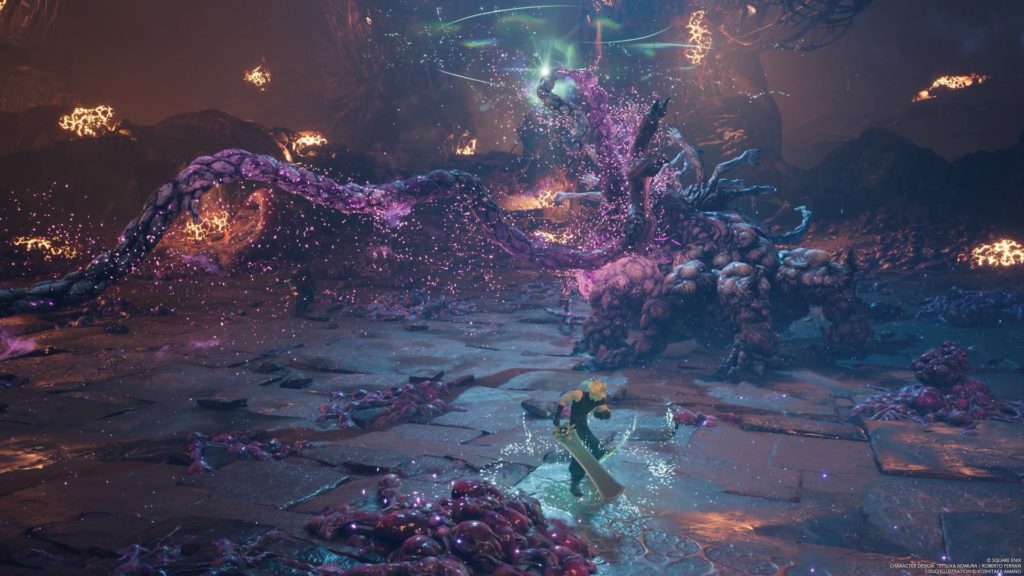
However, each phase of the boss fight swapped the party around without your control. Some phases were just Cloud/Zack solo, which is not really all that fun. Healing while also damaging while also avoiding incoming damage is a lot, and it resulted in me caching ATB charges in case I needed them for healing instead of burning the boss. Some phases had me in random combos of the non-Cloud cast, such as a phase of Rifa, Red, and Yuffie needing to take out wings that switch their magical weakness to stun Sephiroth. The unfortunate thing is….I really didn’t have the party setup for varied magic because my focus for that had been on Cloud and Aerith, neither of whom were available. Ya I could redo my materia with a reset, but I was already 40 minutes into the fight. The final phase was the real kicker though, and it wasn’t because it was hard. It was because it felt incredibly random.
I had a series of wipes that basically resulted from “lol bad timing sucker” that didn’t feel avoidable. One wipe I had just used my ATB to heal and it was followed by Sephiroth throwing out Heartless Angel, which reduces the party to 1 HP. Because I had just used my ATB, I didn’t have any leftover to heal and couldn’t avoid damage long enough to charge it. One wipe was caused by me using an ATB attack, which was long enough that Sephiroth started Skewer during my animation and triggered it right as I finished my animation, leaving me unable to avoid it. Cloud died, and Aerith didn’t have enough ATB or really much of an ability to dodge Sephiroth’s attacks long enough to build up charge to get Cloud back up and heal Cloud and heal herself. The final wipe of the night was me getting to the last phase, which involves dodging a deadly moving attack for a bit, while also requiring you to burn him down, while also requiring you to stun him before the move ends and he wipes the party.
Ultimately my problem with the last phase, and the fight in general, was that it never really felt hard but kept finding ways to just wipe my party with single attacks. It’s not fun when that happens in general, and it’s even less fun when the party setups have changed how you’re used to playing 70 hours in, and it’s even less fun when those attacks are unavoidable and you’re an hour into the fight. The way to get through the fight is to basically just not use ATB segments, keep them around just in case, then burn them when you’re hit with the big unavoidable things. For the last phase’s big final attack, keep them around, spam them when the attack starts, and just burn to the end. Chipping away with basic attacks and storing the ATB charges just made an unnecessarily long fight even longer. As I found out I was about one Thundara away from winning on my final wipe when I finished the game during my lunch break today, which is a really annoying way to have ultimately gone from about 80% health to 0 in an instant.
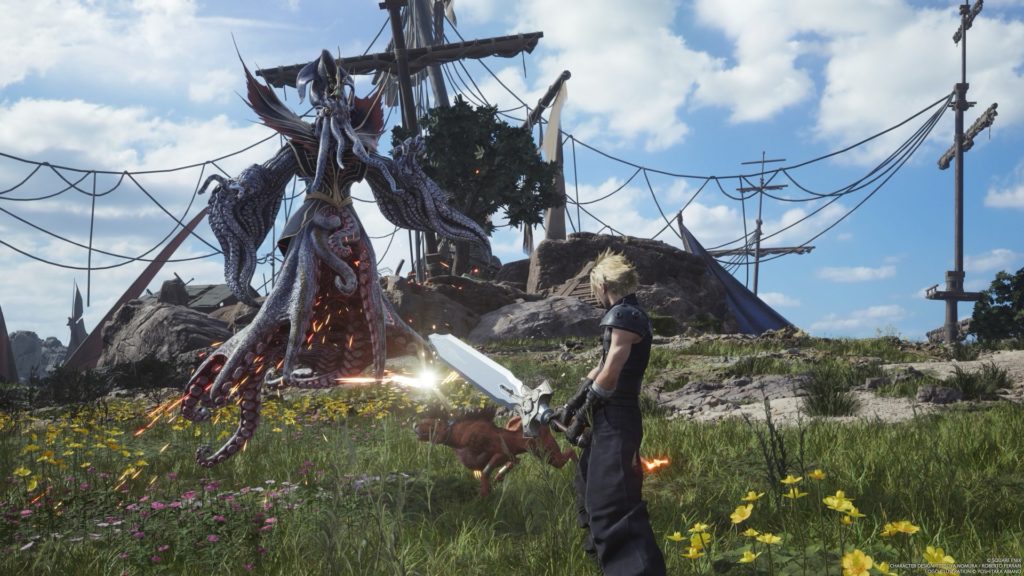
On the story front, I was also kind of disappointed with how things wrapped up, though the jury is still out there based on whatever the third game ends up being.
It was obvious from the previous game that this one was going to end right at the point where Aerith died in the original game. I have no problem with the fact that she died here, but I do have a problem with how they arrived at that. The previous game’s entire core conceit was that the party was able to defy fate and set their own future. This entire game felt like it was doing its best to ignore that. This was as close of a step by step retread of the original game between Midgar and Aerith dying as possible, other than some sidetracking with alternate universe Zack. However, you get to the altar in the Forgotten City and Cloud blocks Sephiroth’s attack. It’s a huge moment meant to shock FF7 fans. It’s then immediately ended by a static screen that transforms it into Aerith being stabbed. That part felt like it was directly meant to evoke the same shock of the original game’s death scene, but when it immediately follows Cloud changing fate it feels deflating and unnecessary. It’s obvious that this is now Sephiroth having direct control over fate and returning it to what he wants. It makes sense. But it also feels unearned.
One of the big things about the entire ending segment is that it’s obvious that Aerith also has control over fate in some form – whether that be direct control or at least an ability to cross between different parts of the multiverse shenanigans at play. She’s able to bring Zack into the Sephiroth fight. She’s able to bring Cloud between multiverses. She’s able to join the Sephiroth fight despite dying, presumably by coming in from the Lifestream. It just feels like she died because she was resigned to dying because that’s the fate that is required to block Meteor in the original game. It feels like the hope of fighting against fate from the original game is gone because that is what was required of the story. It again feels unearned.
If the entire point of the original game was that the party can decide their own fate, this all feels wrong to me. Sephiroth being able to so easily set fate despite showing no ability to do so at this scale previously feels sudden. Aerith suddenly not wanting to decide her own fate despite being so for it previously feels sudden. My problem with all of this isn’t that these things happened, but that they feel like they were conveniently done to maintain the original storyline. Where Remake felt like it was setting up for a new future, this feels like it was purposefully to reduce new things from occurring. It feels like a setup for part 3, rather than something done to result in an interesting part 2, and in turn it weakens the impact of both Remake and the original FF7 because it all became predictable in the end. I guess I was ultimately hoping for Aerith to live, not necessarily because I wanted her specifically to live but just because I wanted part 3 to be something different. Now I feel like I know exactly what is going to happen. The excitement of possibilities I had coming out of part 1 is now just gone.
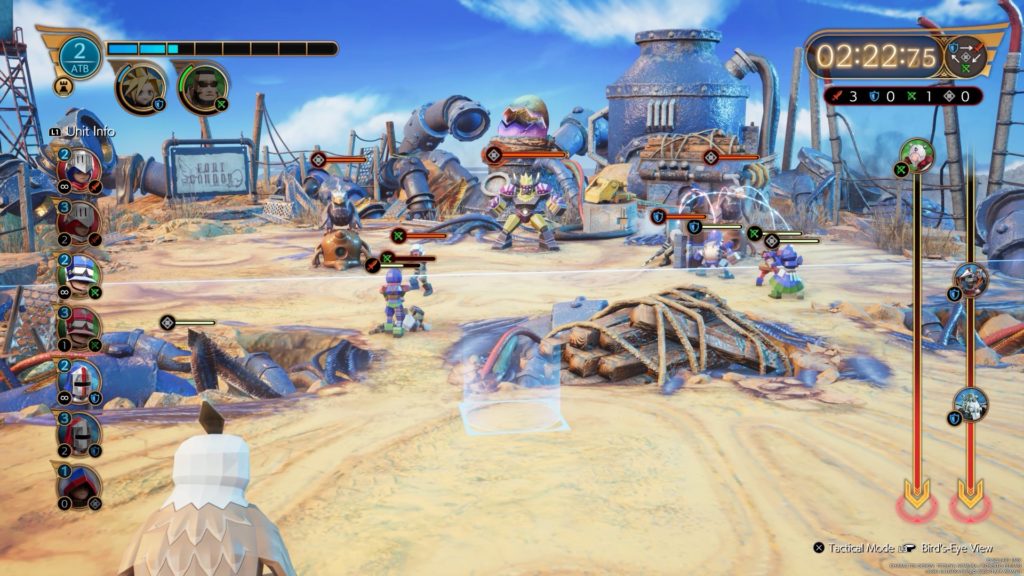
I don’t really want all that to make the game sound like it was bad though. I was disappointed by how it was wrapped up, but ultimately I played it for 70 hours because it was fun. The combat is a refined version of what we saw in Remake and it’s still an absolute blast – as long as you’re in control of your party make up. At this point I’m now curious what part 3 will be. It feels predictable at this point to expect it to wrap up precisely how the original game did, but I’m hoping that they go in a new direction. The story team has laid enough potential places for story changes to occur instead of being a retread of the original. Remake gave me hope that we were going to get something new and interesting, and I’m hoping that they don’t miss the opportunity.


